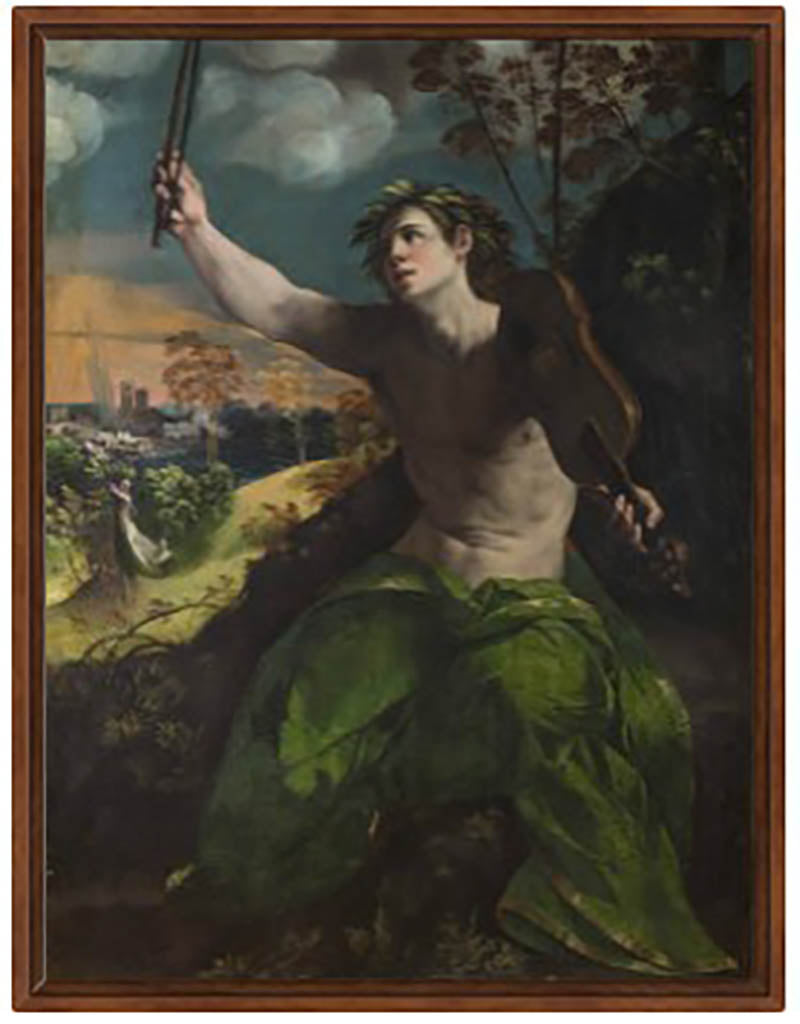Apollo by Luteri Giovanni known as Dosso Dossi. Playback
Apollo by Luteri Giovanni known as Dosso Dossi. Playback
Couldn't load pickup availability
SKU:H5GDTVQZCLS248L6
BUY ONLINE, INSURED TRACEABLE DELIVERY
Unique quality material
Print on handmade paper from Amalfi
Measurement : 29 x 42 cm
Material : work printed on very fine handmade Amalfi paper with fringed edges
Frame : Handmade light brown solid beech wood
Print on pictorial canvas
Measurement : 80 x 60 cm
Material : work printed on very fine grain pictorial canvas
Frame : Light brown in beech wood and handmade wood pulp
YOU WANT A CUSTOMIZED PRODUCT
OR INFORMATION? WRITE TO US
The work
In the foreground of this extraordinary artistic work, the undisputed protagonist is Apollo, the Greek deity of light and music, depicted with a laurel wreath on his head. His right hand rises elegantly as he detaches the bow from the lyre from the arm, still resting on his shoulder.
The subject of this scene has its roots in Greek mythology, specifically in the myth of Apollo and Daphne, which can be traced in the pages of Ovid's Metamorphoses (I, 452-467). The story tells of how Apollo, after defeating the fearsome monster Python, boasts of his success to Cupid, mocking him because the young god of love also carries a bow and arrows with him, weapons apparently unsuitable for a child. Cupid, eager for revenge, shoots one of his arrows at Apollo, making him fall madly in love, while with another arrow he hits the beautiful nymph Daphne, causing her to completely refuse love. Apollo desperately pursues Daphne, but she, in her anguish, invokes her father, the river god Peneus, to free her from the amorous desire of men. The request is granted, but with a surprising transformation: Daphne is transformed into a laurel tree.
The image of Apollo in this artistic work presents a strong reference to classical language, highlighting its link with famous sculptures such as the Belvedere Torso and with the art of Renaissance masters such as Raphael and Michelangelo.
The work, known as "Apollo di Dosso," has gone through a history full of vicissitudes and definitively entered the Borghese collection in 1659, thanks to the will of Luigi Capponi. The artist, who worked at the court of Alfonso d'Este in Ferrara, presumably created this painting on the occasion of the marriage between the duke and Laura Dianti, which took place after the death of Lucrezia Borgia, Alfonso's first wife.
How reproductions are made



Scopri i pregiati materiali di Trizio Editore
Carta di Amalfi fatta a mano, cornice in legno di faggio e vetro museale. Guarda i particolari dei prodotti che renderanno la tua casa più elegante e preziosa.


